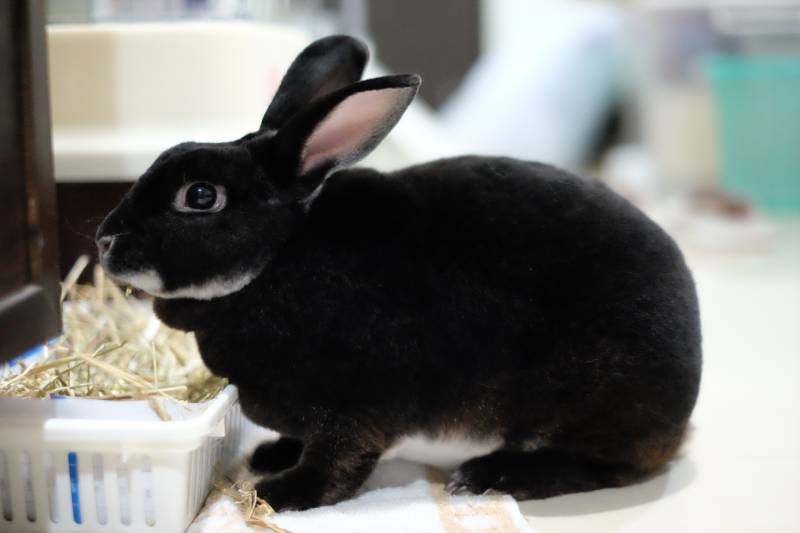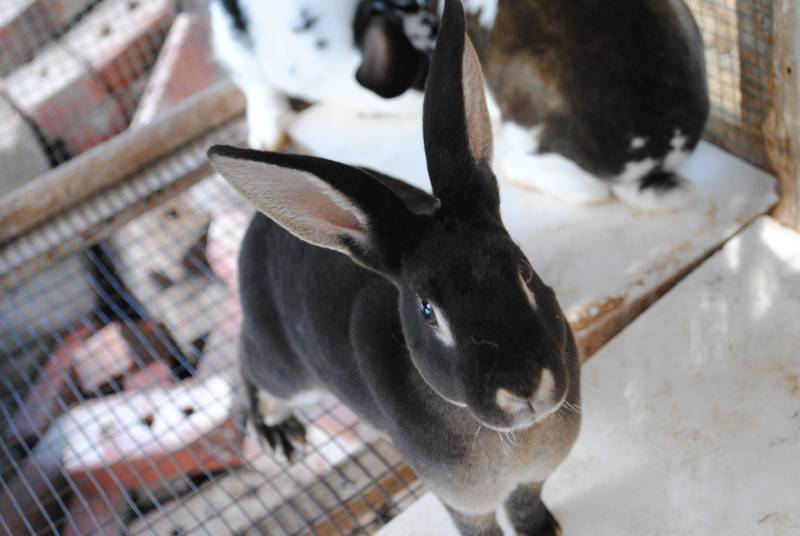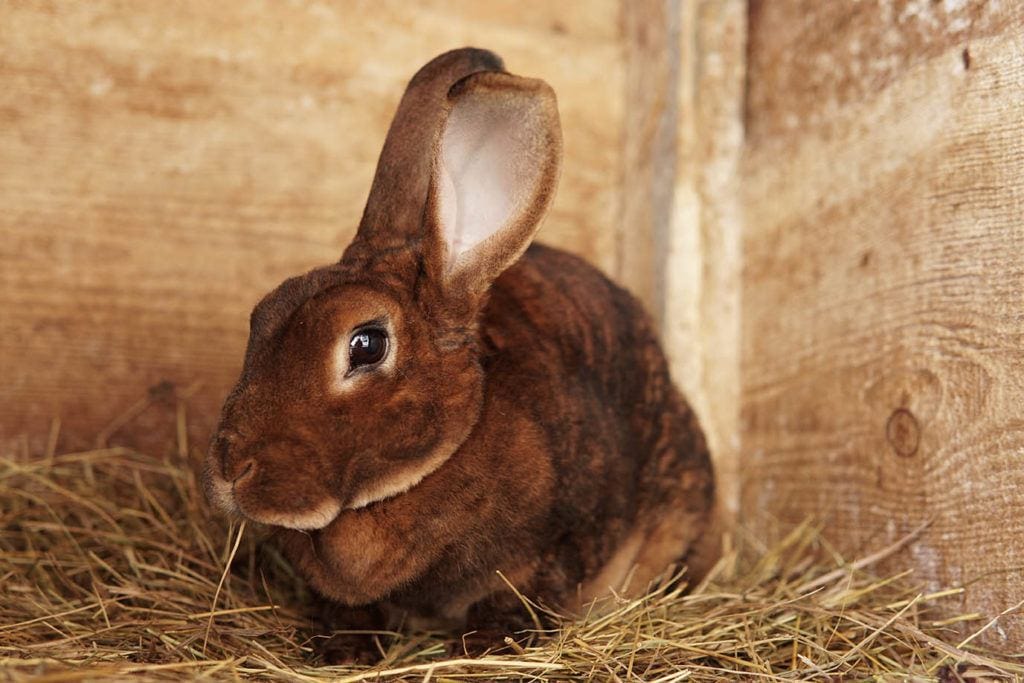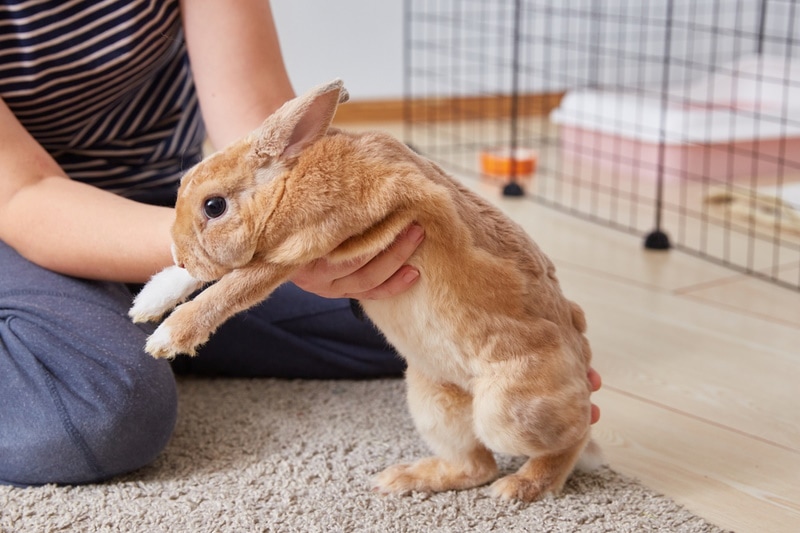
Click to Skip Ahead
The Rex Rabbit is a unique and charming breed known for its plush, velvety fur and friendly personality. These small rabbits make great pets for experienced rabbit owners who are looking for a lively and social companion.
Breed Overview
Size:
Miniature
Weight:
Up to 4 pounds
Lifespan:
7–12 years
Similar Breeds:
Netherland Dwarf, Jersey Wooly, Dutch, Holland Lop
Suitable for:
Experienced rabbit owners with other rabbits
Temperament:
Spunky, friendly, adaptable
Originating from France, the Rex Rabbit is known for its distinctive curly fur, which gives it a plush appearance. This breed is a result of a genetic mutation and has since become a popular choice among rabbit enthusiasts for its unique looks and friendly nature.
Rex Rabbit Breed Characteristics
How Much Do These Rabbits Cost?
Rex Rabbits are moderately common, but their unique fur and charming personalities make them highly sought after. They originated in France in the 1920s, and since then, they have gained popularity worldwide. The price of a Rex Rabbit can vary depending on a lot of different factors such as the breeder’s reputation, location, and the rabbit’s age, color, and pedigree. On average, you can expect to fork over between $50 and $100 for a Rex Rabbit.
Temperament & Intelligence of the Rex Rabbit

Rex Rabbits are known for their spunky, friendly, and adaptable temperament. They are intelligent animals that enjoy socializing with their owners and other rabbits. Their curious and playful nature makes them an entertaining and engaging pet.
Do These Rabbits Make Good Pets? 👪
Yes, Rex Rabbits make excellent pets for experienced rabbit owners who are looking for a lively and social companion. Their friendly nature and adaptability make them suitable for families with other rabbits or pets. However, they’re probably not the best choice for first-time rabbit owners due to their unique grooming needs and high energy levels.
Does This Rabbit Get Along With Other Pets?
Rex Rabbits generally get along well with other pets, especially other rabbits. They are social animals that enjoy companionship and thrive in a multi-pet household. However, to ensure their safety, it is essential to supervise interactions between rabbits and larger pets, such as dogs or cats.
Things to Know When Owning a Rex Rabbit:
Food & Diet Requirements 🥕
Rex Rabbits require a balanced diet to maintain their health and well-being. It’s essential to monitor your Rex Rabbit’s weight and adjust their diet accordingly. Overfeeding leads to obesity and other health problems, while underfeeding can cause malnutrition. Their diet should consist of the following components.

Habitat & Hutch Requirements 🏠
Rex Rabbits, known for their plush fur and friendly personalities, require a comfortable and spacious living environment to thrive. Providing them with a suitable hutch or enclosure is essential for their well-being. Here are some important factors to consider when setting up a habitat for your Rex Rabbit:
Size
The hutch or enclosure should be large enough for your rabbit to move around freely. As a general rule of thumb, the minimum size should be at least four times the length of your rabbit when stretched out. This will allow them to stand, stretch, and hop comfortably without feeling cramped.
Flooring
Rex Rabbits have sensitive feet, so providing them with a solid floor in their hutch is crucial. Wire floors can lead to discomfort and even injuries, such as sore hocks. A solid wood, plastic, or metal floor is more suitable and comfortable for your rabbit.
Bedding
Provide soft and absorbent bedding material to ensure your Rex Rabbit’s comfort. Straw and wood shavings are popular choices, as they offer cushioning and insulation. Make sure to avoid using cedar or pine shavings, as they can emit harmful chemicals. Replace the bedding regularly to maintain a clean and hygienic environment.
Shelter
Your rabbit’s hutch should have a designated sheltered area where they can retreat for privacy and protection. This can be a separate compartment within the hutch or an attached hideout. Providing a safe space for your rabbit will help them feel secure and reduce stress.
Ventilation & Temperature
Proper ventilation is essential to prevent the buildup of ammonia from urine, which can lead to respiratory issues. Ensure that the hutch has adequate airflow while also protecting your rabbit from drafts and extreme temperatures. Rex Rabbits are sensitive to heat, so keeping their living space cool and shaded during hot weather is important.
Exercise Space
In addition to a spacious hutch, Rex Rabbits need ample room to exercise and explore. Providing an attached run or a secure outdoor play area will encourage your rabbit to stay active and healthy. Make sure the exercise space is predator-proof and safe from potential hazards.
Enrichment
To keep your Rex Rabbit mentally stimulated and engaged, provide toys and activities in their hutch and exercise area. This can include tunnels, ramps, chew toys, and puzzle feeders. Providing mental and physical stimulation opportunities will help prevent boredom and promote overall well-being.

Exercise & Sleeping Needs 🐇
Rex Rabbits, with their lively personalities and inquisitive nature, need regular exercise and comfortable sleeping arrangements to maintain good health and overall well-being. By catering to these needs, you’ll ensure your rabbit stays active, content, and well-rested. Here’s what you should know about the exercise and sleeping needs of Rex Rabbits:

Training 🥎
Rex Rabbits can be trained to perform simple tricks and follow basic commands. Consistent, positive reinforcement training methods work best for these intelligent animals.
Start with the Basics
Before attempting to teach your rabbit tricks, begin with basic commands, such as “come” or “stay.” This will help establish a foundation of communication and trust between you and your rabbit.
Positive Reinforcement
Utilize rewards-based training methods to encourage your rabbit to learn new behaviors. Offer small treats, praise, or gentle petting as a reward when they successfully perform the desired action. Avoid punishment or negative reinforcement, as this can damage your relationship with your rabbit and hinder progress.
Clicker Training
Clicker training is a popular method for teaching animals new behaviors. By using a small device that makes a clicking sound, you can effectively communicate with your rabbit by marking the exact moment they perform the desired behavior. Pair the click with a reward to reinforce the positive association.
Short Sessions
Keep training sessions short and engaging, ideally around 5–10 minutes per session. Rex Rabbits have relatively short attention spans, so it’s crucial to maintain their interest by avoiding lengthy or repetitive training.
Patience and Consistency
Like any animal, rabbits learn at their own pace. Be patient and consistent in your training approach, repeating the same command or trick until they fully grasp the concept. It may take several days or weeks for your rabbit to master a new skill, so remain persistent and committed to the process.
Socialization
Exposing your Rex Rabbit to different people, environments, and experiences will help them become more confident and adaptable. A well-socialized rabbit is more likely to respond positively to training and new situations.
Grooming ✂️
Rex Rabbits are admired for their velvety, plush fur, which sets them apart from other rabbit breeds. However, this unique coat requires special attention and care to keep it in optimal condition. Here’s a guide on how to properly groom your Rex Rabbit:

Lifespan and Health Conditions 🏥
Being aware of these issues and providing appropriate care can help ensure a long, happy life for your rabbit.
Dental Issues
Like all rabbits, Rex Rabbits have continuously growing teeth, which can lead to overgrowth or malocclusion if not properly managed. This can result in difficulty eating, weight loss, and infections. To prevent dental problems, provide your rabbit with a diet rich in hay, as well as chew toys to help wear down their teeth naturally. Regular dental check-ups with a veterinarian, of course, are also a top priority for maintaining good oral health.
Respiratory Infections
Rex Rabbits can be prone to respiratory infections, such as snuffles (Pasteurellosis), which is caused by bacteria. Signs may include sneezing, nasal discharge, and difficulty breathing. To reduce the risk of respiratory infections, keep your rabbit’s living environment clean and well-ventilated. If you think you notice any signs of respiratory distress, consult a veterinarian immediately for proper diagnosis and treatment.
Overgrown Nails
If not regularly trimmed, your rabbit’s nails can become overgrown, leading to discomfort and potential injuries. To prevent this issue, monitor your Rex Rabbit’s nails and trim them as needed using small animal nail clippers. Be cautious not to cut the quick, as this can cause pain and bleeding.
Ear Mites
Ear mites are nothing to panic about. They’re a common issue among rabbits, causing itching, inflammation, and potential infections. Regularly inspect and clean your rabbit’s ears using a soft cloth or cotton ball dampened with warm water to prevent ear mites. If you’re worried your rabbit has ear mites, consult a veterinarian. Ear mites usually require treatment to clear up but are generally not life-threatening.
Male vs Female
When it comes to Rex Rabbits, both males (bucks) and females (does) make wonderful pets, with few notable differences in temperament or appearance. However, there are some gender-specific health concerns and behavioral traits to consider when choosing between a male or female Rex Rabbit.
Temperament
In general, both male and female Rex Rabbits have friendly and sociable personalities. However, individual temperaments can vary, and factors such as environment, socialization, and upbringing can significantly shape a rabbit’s behavior. Some owners find that male rabbits tend to be more easygoing and affectionate, while females may be more independent and territorial. It’s essential to remember that each rabbit is unique, and their personality may not strictly adhere to these stereotypes.
Health Concerns
Females are more prone to certain health issues, such as uterine cancer. Studies have shown that up to 60% of unspayed female rabbits may develop uterine cancer by age three. Spaying your female Rex Rabbit can significantly reduce this risk and also prevent unwanted pregnancies.
If not neutered, males may be more prone to testicular cancer or hormonal-related aggression. Neutering your male Rex Rabbit can help mitigate these risks and may also reduce spraying (urine marking) and other undesirable behaviors, such as mounting.
Spaying or Neutering
Regardless of gender, spaying or neutering your Rex Rabbit is highly recommended. These procedures can help reduce the risk of gender-specific health issues, decrease aggression, and contribute to a longer, healthier life for your rabbit. It is generally advised to spay or neuter your rabbit at around 4–6 months of age but consult with your veterinarian for the best course of action for your specific pet.
3 Little-Known Facts About Rex Rabbits
1. Rex Rabbits have the densest fur of any rabbit breed.
2. The Rex Rabbit’s unique fur is a result of a genetic mutation that occurred in France in the 1920s.
3. Rex Rabbits come in a wide variety of colors, including black, white, blue, chocolate, lilac, and more.

Final Thoughts
The Rex Rabbit is a charming and unique breed that makes an excellent pet for experienced rabbit owners. Their friendly nature, adaptability, and plush fur make them popular among rabbit enthusiasts. If you’re looking for a lively and social companion, the Rex Rabbit might be the perfect fit for your family.
Featured Image Credit: assia Marie Ott, Shutterstock









